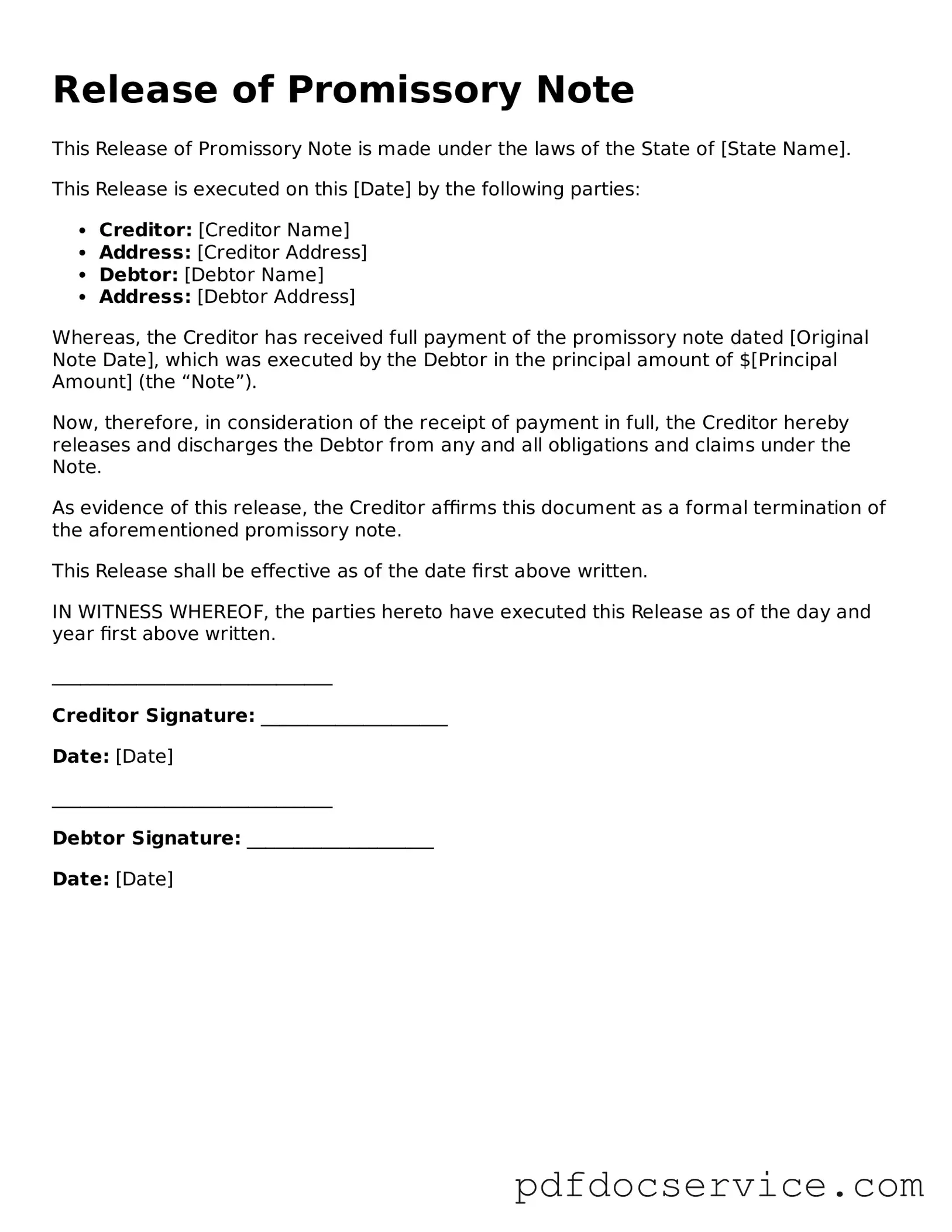The Release of Promissory Note form is a document that officially cancels a promissory note. This note is a written promise to pay a specific amount of money to a lender. Once the borrower has fulfilled their obligations, this form confirms that the debt has been paid and releases the borrower from any further liability.
You should use this form when the borrower has completely paid off the loan associated with the promissory note. It's important to have this document to clear any record of debt and to protect both parties involved.
Who needs to sign the Release of Promissory Note?
Both the lender and the borrower must sign the Release of Promissory Note. This ensures that both parties agree that the debt has been settled. In some cases, a witness or notary public may also be required to validate the document.
To complete the form, you will need the following information:
-
The names and addresses of both the borrower and the lender.
-
The date the promissory note was signed.
-
The amount of the loan.
-
The date the loan was fully paid.
Typically, there is no fee for completing a Release of Promissory Note form itself. However, if you choose to have the document notarized or filed with a court, there may be associated costs. Always check local regulations for any specific requirements.
If you do not file the Release of Promissory Note, the borrower may still appear to owe the debt. This can lead to misunderstandings or disputes in the future. Filing the form protects both parties by providing clear documentation that the debt has been satisfied.
While you may find generic templates online, it is recommended to use a specific Release of Promissory Note form tailored to your situation. This ensures that all necessary information is included and that the document meets any legal requirements.
Once completed and signed, keep the Release of Promissory Note in a safe place. Both the lender and borrower should retain a copy for their records. This will help in case any questions arise about the loan in the future.
